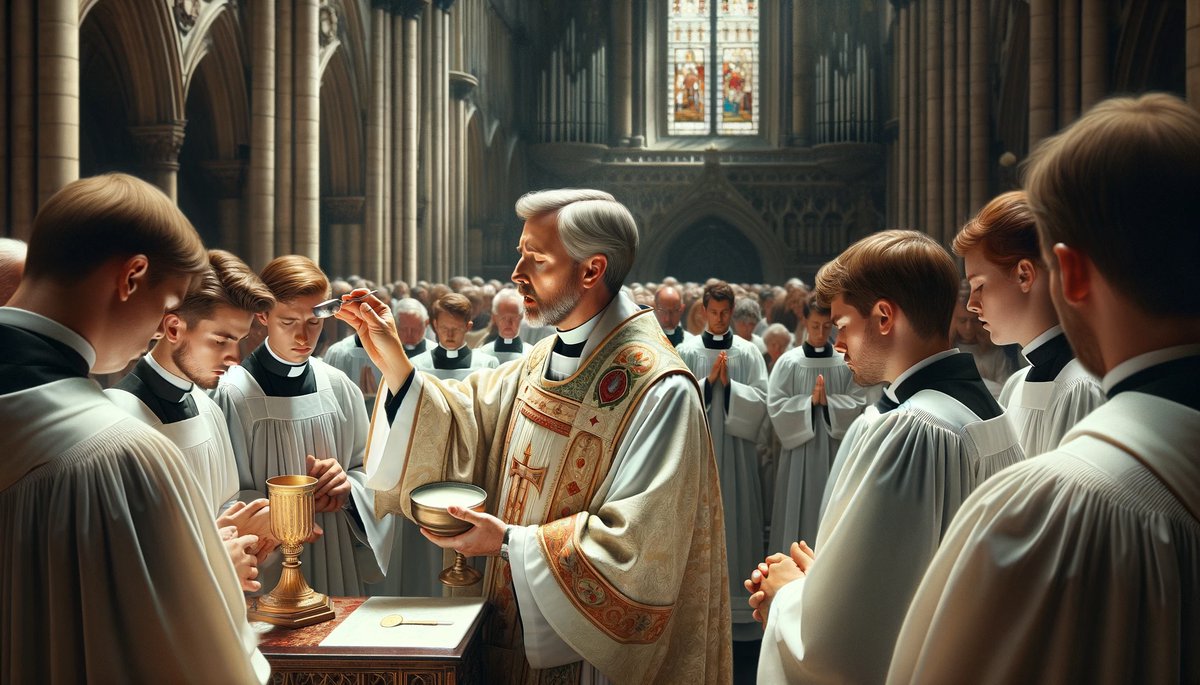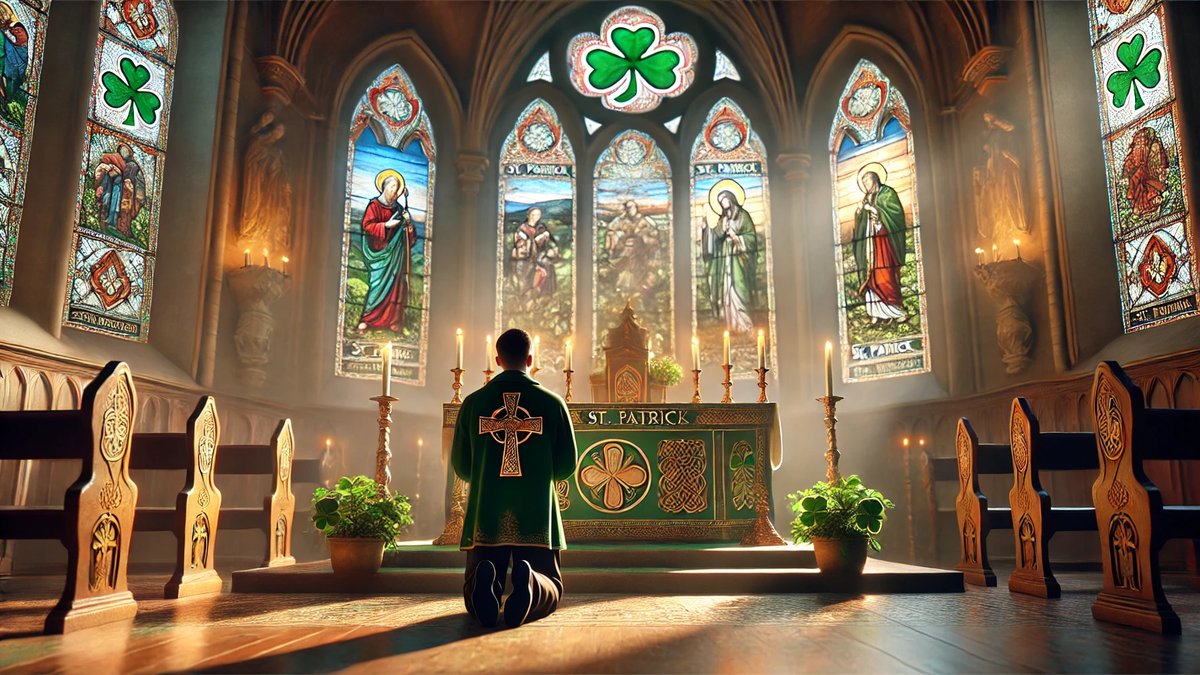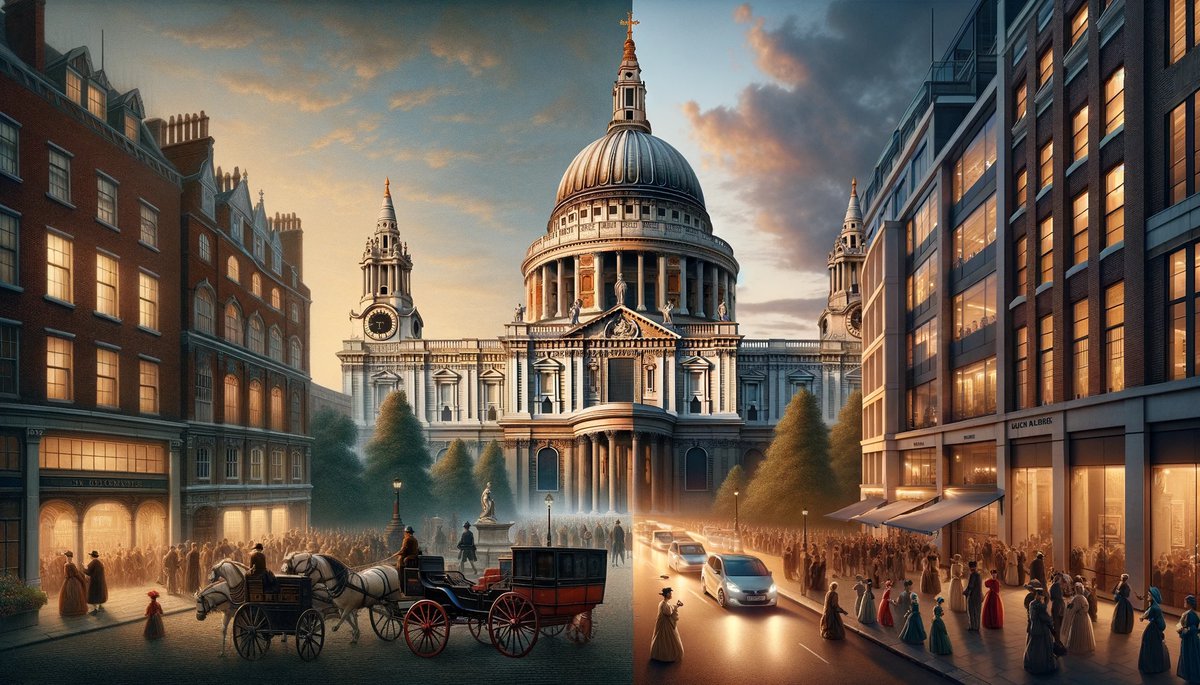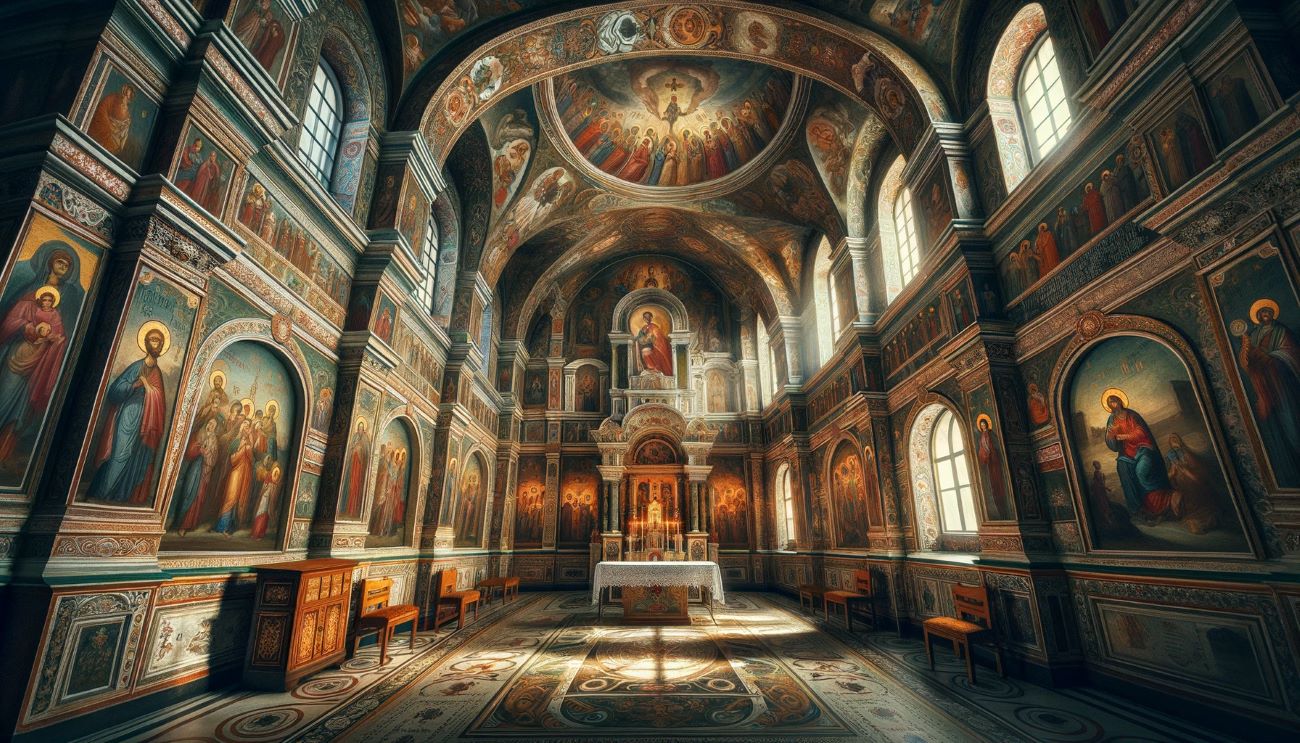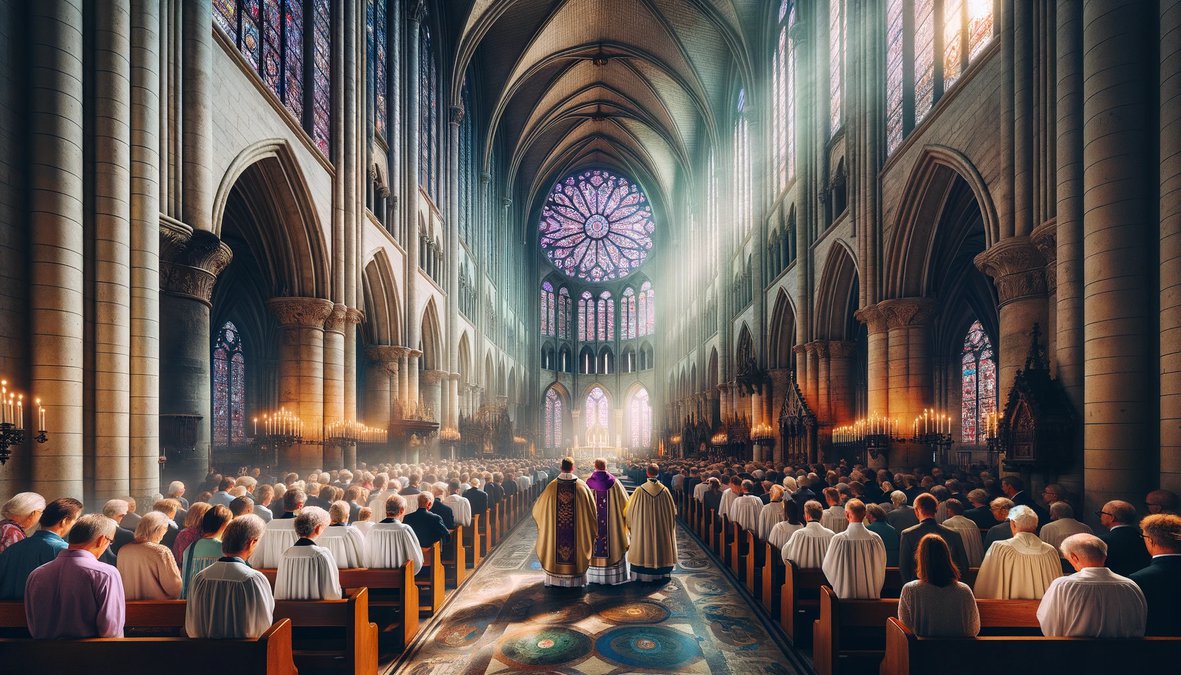Home>Arts and Culture>What Religion Is St. Patrick’s Cathedral, Dublin?


Arts and Culture
What Religion Is St. Patrick’s Cathedral, Dublin?
Published: February 16, 2024
Ericka Andersen, an editor at Christian.net, expertly merges digital strategy with content creation, focusing on faith and societal issues. Her communication skills enhance the platform's engaging narratives, fostering meaningful dialogue on belief's impact on society.
Discover the rich history and cultural significance of St. Patrick's Cathedral in Dublin. Explore the intersection of arts and culture at this iconic religious site.
(Many of the links in this article redirect to a specific reviewed product. Your purchase of these products through affiliate links helps to generate commission for Christian.net, at no extra cost. Learn more)
Table of Contents
Introduction
St. Patrick's Cathedral in Dublin stands as a testament to centuries of history, culture, and religious significance. As one of the most iconic landmarks in Ireland, this majestic structure has captured the hearts and minds of locals and visitors alike. Its soaring spires and intricate architecture serve as a visual representation of the deep-rooted traditions and spiritual heritage that have shaped the country.
The cathedral's significance extends beyond its religious role, as it also serves as a symbol of national identity and pride. Its presence in the heart of Dublin is a constant reminder of the enduring legacy of St. Patrick, the patron saint of Ireland, and the profound impact of Christianity on the nation's history.
With its rich tapestry of stories, traditions, and architectural grandeur, St. Patrick's Cathedral invites us to delve into the depths of Ireland's past and explore the intricate connections between faith, culture, and community. In the following sections, we will embark on a journey to uncover the captivating history of this revered institution, explore its religious affiliation, and shed light on its pivotal role within Dublin's vibrant religious community. Let's embark on this enlightening exploration of St. Patrick's Cathedral, where history, spirituality, and culture converge in a harmonious symphony.
History of St. Patrick's Cathedral
St. Patrick's Cathedral, also known as the National Cathedral and Collegiate Church of Saint Patrick, Dublin, holds a storied past that intertwines with the rich tapestry of Irish history. Its origins can be traced back to the 5th century when St. Patrick, the patron saint of Ireland, is said to have baptized converts to Christianity at a well adjacent to the site. The cathedral's foundation, however, dates to 1191 when Archbishop John Comyn initiated its construction.
Throughout the centuries, the cathedral has weathered the tides of history, witnessing pivotal events that have shaped Ireland's narrative. It served as a focal point for religious worship, a sanctuary for the faithful, and a bastion of resilience during times of turmoil. The cathedral's architectural evolution reflects the diverse influences that have left an indelible mark on its structure, from the Gothic Revival additions in the 19th century to the intricate carvings and stained glass windows that adorn its interior.
One of the most poignant chapters in the cathedral's history is its association with Jonathan Swift, the renowned author of "Gulliver's Travels" and the Dean of St. Patrick's Cathedral from 1713 to 1745. Swift's legacy looms large within the cathedral's walls, and his impact on both literature and civic life is commemorated through various memorials and artifacts housed within the sacred precincts.
The cathedral's enduring presence has transcended the passage of time, standing as a testament to the resilience and unwavering spirit of the Irish people. Its hallowed halls have echoed with the prayers, hymns, and collective aspirations of generations, fostering a sense of continuity and reverence for the traditions that have shaped the nation.
As we gaze upon the venerable edifice of St. Patrick's Cathedral, we are reminded of the intricate interplay between history, faith, and cultural identity. Its narrative is interwoven with the threads of Ireland's past, each stone bearing witness to the triumphs and tribulations that have defined the nation. The cathedral stands not only as a place of worship but as a living chronicle of Ireland's journey through the annals of time, beckoning us to immerse ourselves in its compelling saga.
Religious Affiliation of St. Patrick's Cathedral
St. Patrick's Cathedral, a bastion of spiritual devotion and historical significance, holds a profound religious affiliation that resonates with the core of Ireland's Christian heritage. As the National Cathedral and Collegiate Church of Saint Patrick, Dublin, it stands as a beacon of Anglican worship and a testament to the enduring legacy of Christianity in the country.
The cathedral's religious affiliation aligns with the Anglican tradition, specifically within the Church of Ireland, which is an integral part of the worldwide Anglican Communion. This affiliation underscores the cathedral's role as a focal point for Anglican worship, religious ceremonies, and communal gatherings, drawing a diverse congregation of faithful adherents and visitors from across the globe.
The Anglican tradition, with its roots in the Reformation era, has played a pivotal role in shaping the religious landscape of Ireland. St. Patrick's Cathedral, as a prominent Anglican institution, embodies the principles, liturgical practices, and theological tenets espoused within this tradition. Its affiliation with the Church of Ireland underscores its commitment to upholding the Anglican ethos while fostering an inclusive and welcoming environment for all who seek spiritual solace within its hallowed precincts.
The cathedral's religious affiliation extends beyond its role as a place of worship, encompassing a myriad of ceremonial and pastoral duties that are integral to the Anglican faith. From the celebration of the Eucharist to the observance of sacred festivals and the provision of pastoral care, St. Patrick's Cathedral stands as a steadfast guardian of Anglican traditions, nurturing a sense of spiritual belonging and communal unity among its congregation.
Moreover, the cathedral's religious affiliation serves as a testament to the enduring influence of Christianity in Ireland's cultural and social fabric. It symbolizes the profound impact of faith on the nation's collective identity and underscores the role of religious institutions in fostering a sense of continuity and spiritual nourishment within society.
In essence, the religious affiliation of St. Patrick's Cathedral within the Anglican tradition encapsulates the timeless devotion, spiritual resonance, and cultural significance that have defined its role as a revered institution within Ireland's religious tapestry. It stands as a living testament to the enduring legacy of Christianity, inviting all who cross its threshold to partake in a journey of faith, reflection, and communal reverence.
Role of St. Patrick's Cathedral in Dublin's Religious Community
St. Patrick's Cathedral occupies a central and revered position within Dublin's religious community, serving as a focal point for spiritual devotion, communal gatherings, and the preservation of Ireland's religious heritage. Its role transcends mere architectural grandeur, extending into the very heart of Dublin's religious tapestry, where it weaves a rich and vibrant narrative of faith, tradition, and communal solidarity.
At the core of its role is the provision of a sacred space for Anglican worship, where the faithful gather to partake in religious ceremonies, offer prayers, and seek solace in moments of contemplation. The cathedral's hallowed halls resonate with the harmonious strains of hymns and the collective voices of the congregation, fostering an atmosphere of reverence and spiritual communion. It stands as a sanctuary where the timeless rituals of Anglican worship unfold, fostering a sense of spiritual continuity and communal belonging among its diverse parishioners.
Beyond its function as a place of worship, St. Patrick's Cathedral plays a pivotal role in nurturing a sense of cultural and historical awareness within Dublin's religious community. Its status as the National Cathedral and Collegiate Church of Saint Patrick, Dublin, underscores its significance as a custodian of Ireland's religious heritage. Through its myriad of educational programs, guided tours, and historical exhibitions, the cathedral serves as a living repository of Ireland's Christian legacy, inviting visitors to delve into the annals of history and explore the profound impact of Christianity on the nation's cultural identity.
Moreover, the cathedral stands as a beacon of inclusivity and outreach, embracing individuals from all walks of life and extending a warm embrace to the global community. Its commitment to fostering interfaith dialogue, promoting social justice initiatives, and providing pastoral care reflects its dedication to serving as a catalyst for positive change within Dublin's religious landscape. By engaging in outreach programs, charitable endeavors, and collaborative partnerships, St. Patrick's Cathedral embodies the spirit of compassion and empathy, enriching the lives of countless individuals and contributing to the welfare of the broader community.
In essence, St. Patrick's Cathedral's role in Dublin's religious community transcends the confines of its physical structure, embodying a living testament to the enduring power of faith, cultural heritage, and communal solidarity. It stands as a timeless symbol of spiritual devotion, historical continuity, and inclusive fellowship, beckoning all who cross its threshold to partake in a journey of reverence, enlightenment, and shared humanity.
Conclusion
In conclusion, St. Patrick's Cathedral in Dublin stands as a resplendent embodiment of Ireland's rich history, enduring faith, and cultural heritage. Its towering spires and majestic architecture serve as a testament to the profound impact of Christianity on the nation's narrative, inviting visitors to immerse themselves in a tapestry of tradition, spirituality, and communal solidarity.
The cathedral's storied past, intricately woven into the fabric of Irish history, reflects the resilience and unwavering spirit of the Irish people. From its origins rooted in the 5th century to its enduring presence as the National Cathedral and Collegiate Church of Saint Patrick, Dublin, the cathedral stands as a living chronicle of Ireland's journey through the annals of time. Its hallowed halls have echoed with the prayers, hymns, and collective aspirations of generations, fostering a sense of continuity and reverence for the traditions that have shaped the nation.
Furthermore, the religious affiliation of St. Patrick's Cathedral within the Anglican tradition underscores its commitment to upholding the principles, liturgical practices, and theological tenets espoused within this tradition. As a beacon of Anglican worship, the cathedral embraces individuals from all walks of life, fostering an inclusive and welcoming environment for all who seek spiritual solace within its hallowed precincts.
The cathedral's role within Dublin's religious community extends beyond its function as a place of worship, encompassing a myriad of ceremonial and pastoral duties that are integral to the Anglican faith. It serves as a sanctuary for spiritual devotion, a custodian of Ireland's religious heritage, and a catalyst for positive change within the broader community. Through its educational programs, historical exhibitions, and outreach initiatives, St. Patrick's Cathedral continues to inspire a sense of cultural and historical awareness, inviting visitors to delve into the annals of history and explore the profound impact of Christianity on the nation's cultural identity.
In essence, St. Patrick's Cathedral stands as a timeless symbol of spiritual devotion, historical continuity, and inclusive fellowship, beckoning all who cross its threshold to partake in a journey of reverence, enlightenment, and shared humanity. As we bid adieu to this enlightening exploration, let us carry forth the enduring legacy of St. Patrick's Cathedral, where history, spirituality, and culture converge in a harmonious symphony, resonating with the echoes of centuries past and the aspirations of generations yet to come.







